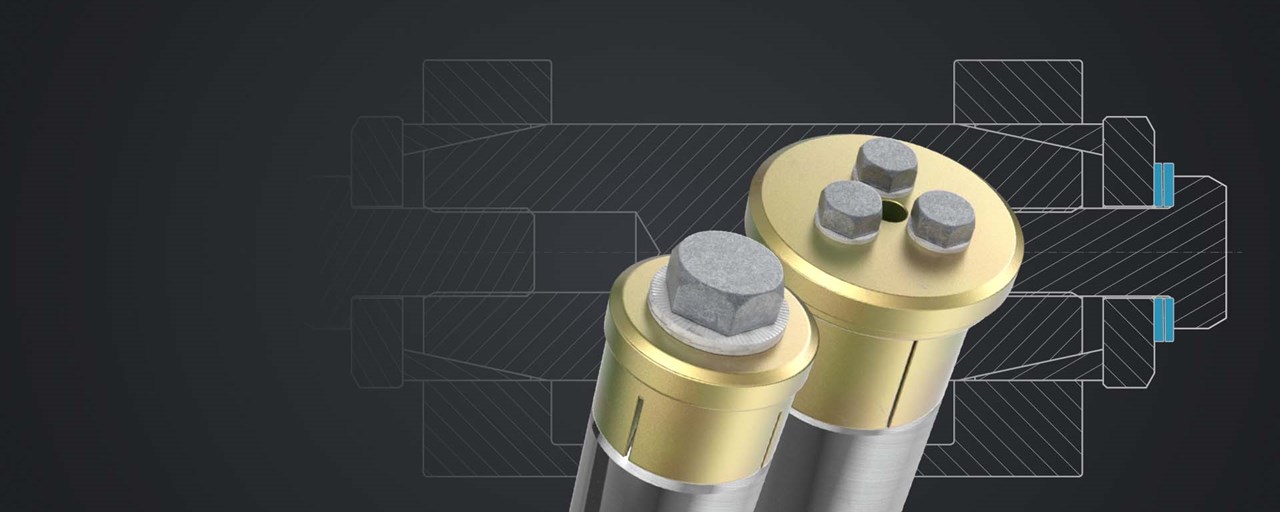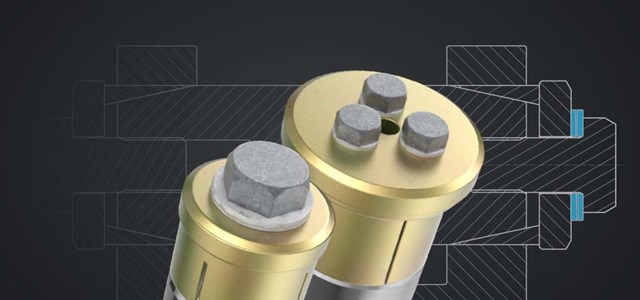

The Experts: Can I use Nord-Lock wedge-locking washers to lock Expander System?
Nord-Lock assembly recommendations advise users to avoid using Nord-Lock washers in combination with a plain washer that can rotate. Here’s why:
This is because the Nord-Lock washer will secure the bolt against the plain washer, but it is the friction between the red plain washer and the mating surface that determines the security of the assembly. Since Nord-Lock has no control over that red plain washer, the mating surface nor the friction between them, then Nord-Lock cannot guarantee the locking of the joint. However, some Expander System customers do successfully use Nord-Lock washers in this way to secure Expander System with wedge-locking or increased friction.

100% wedge locking
For 100% wedge locking there must be no slipping surface under the Nord-Lock washer. For applications with this requirement, the Expander System is typically designed as a multi bolt design that prevents the pressure washer from rotating. In this case, the assembly meets the general mounting recommendations of Nord-Lock washers being assembled against a surface that is not able to rotate. The Nord-Lock washer will provide secure locking of the bolts.
Improved friction locking
If you decide that improved locking is sufficient for your application, then adding Nord-Lock washers to any Expander system will make it harder for the bolts to rotate loose.

Let´s look at an example. The torqued bolt on the left side on the Expander System is held in place by the friction between the bolt head and the pressure washer. The friction force equals preload x friction and the friction force is applied at a torque arm of 16 mm.
The bolt on the right-hand side includes Nord-Lock washers, resulting in 100% wedge-locking between the bolt and the pressure washer. In this way the bolt is held in place by the friction between the pressure washer and the sleeve. The friction force is applied at a torque arm of 31 mm.
For all friction locking, the mentioned torque arm is an essential parameter. Double the torque arm and it will be twice as hard for the bolt to rotate loose (providing all other parameters are equal). In this example, the torque arm is increased with a factor of 31/16=1,93 and it follows that the friction locking is thereby improved with a factor of about 2.
There is one more advantage of moving the rotation point from between the head of the bolt and the pressure washer to between the pressure washer and the sleeve. The head of the bolt is harder than the sleeve and therefore the friction coefficient between the head of the bolt and the pressure washer is lower than the friction coefficient between the pressure washers and the sleeve. The higher friction and the larger distance from the rotating axis or centreline of the bolt makes it harder for the bolt to rotate loose.





